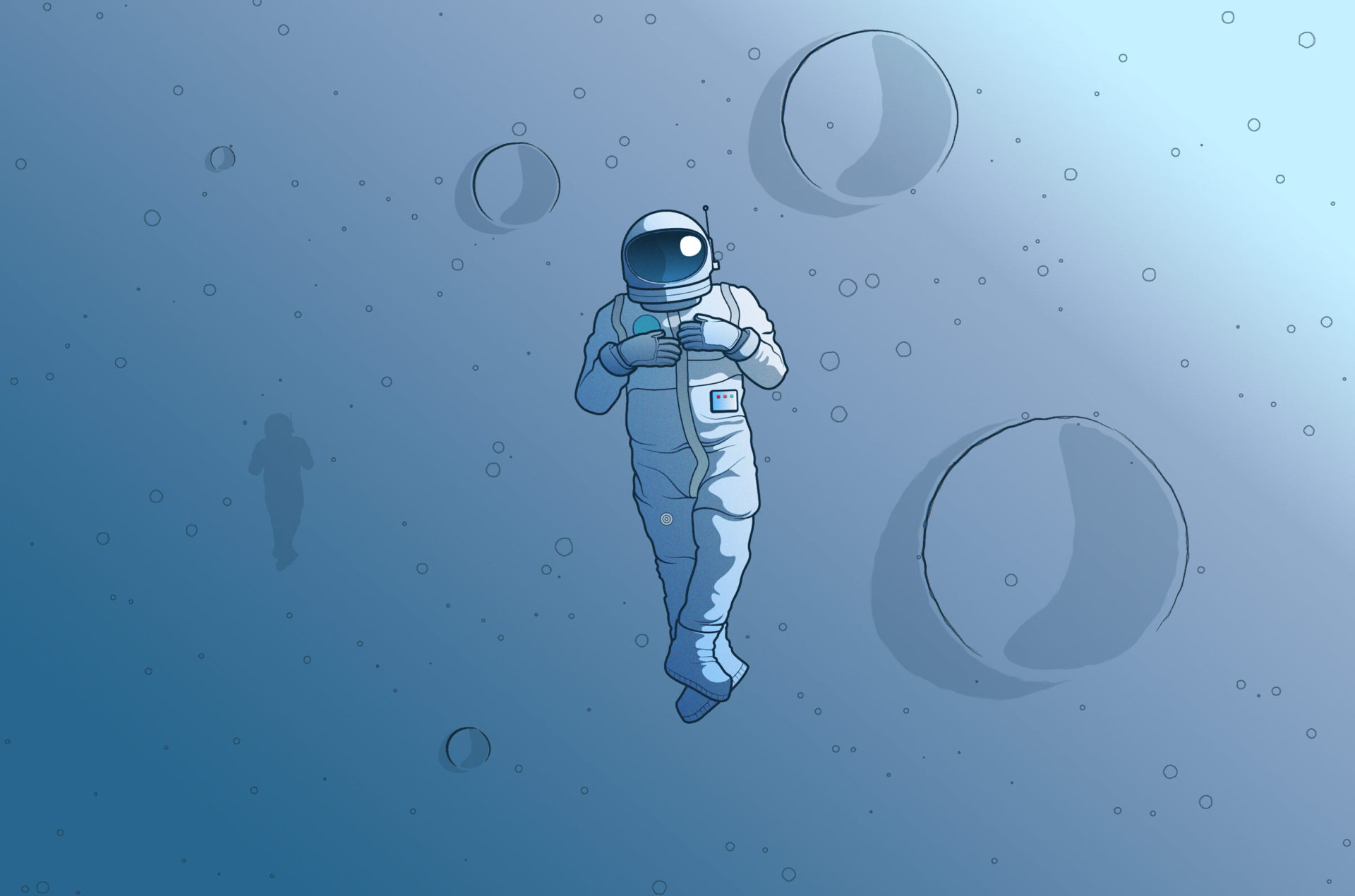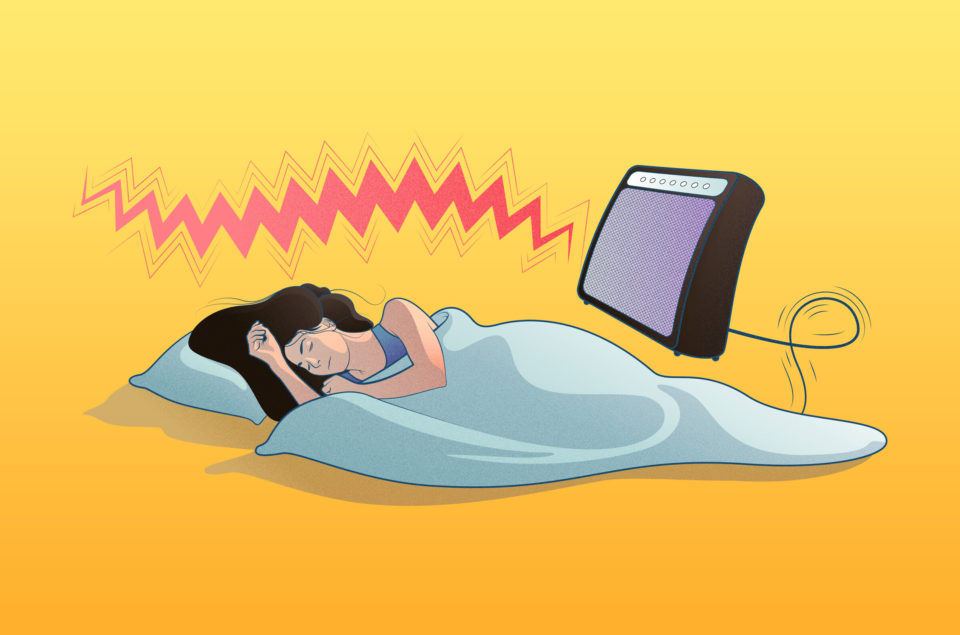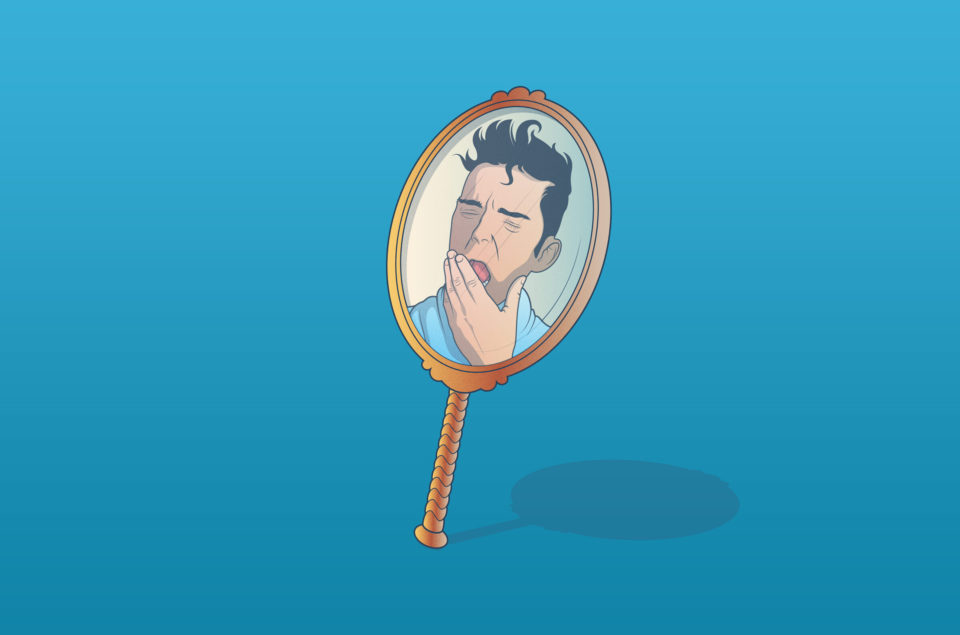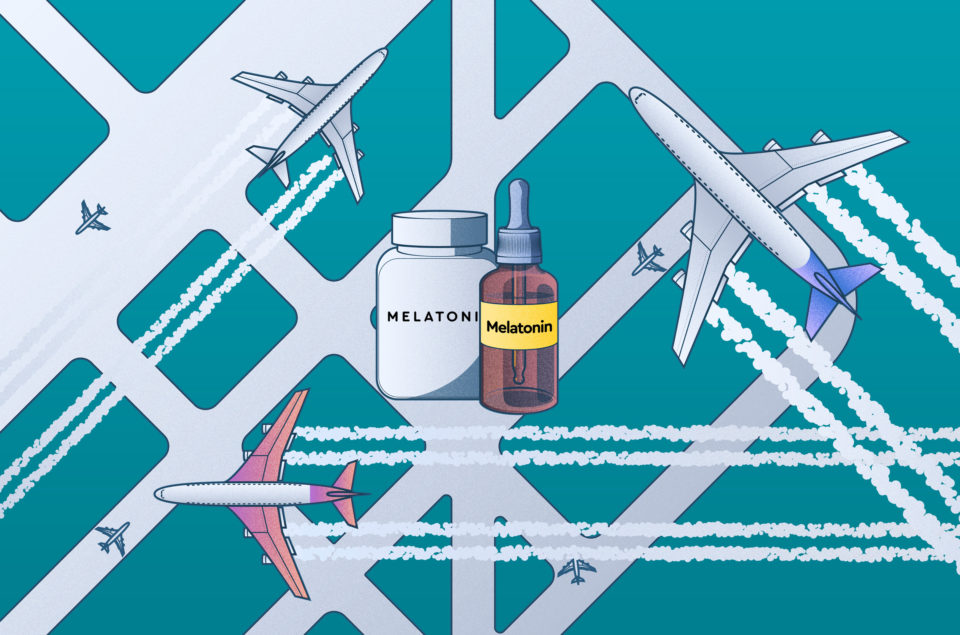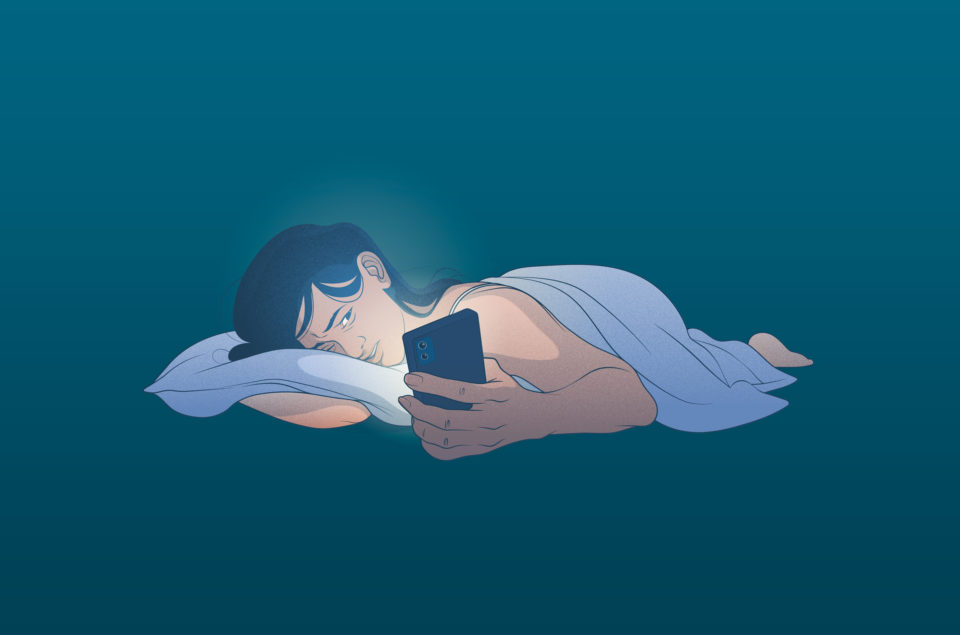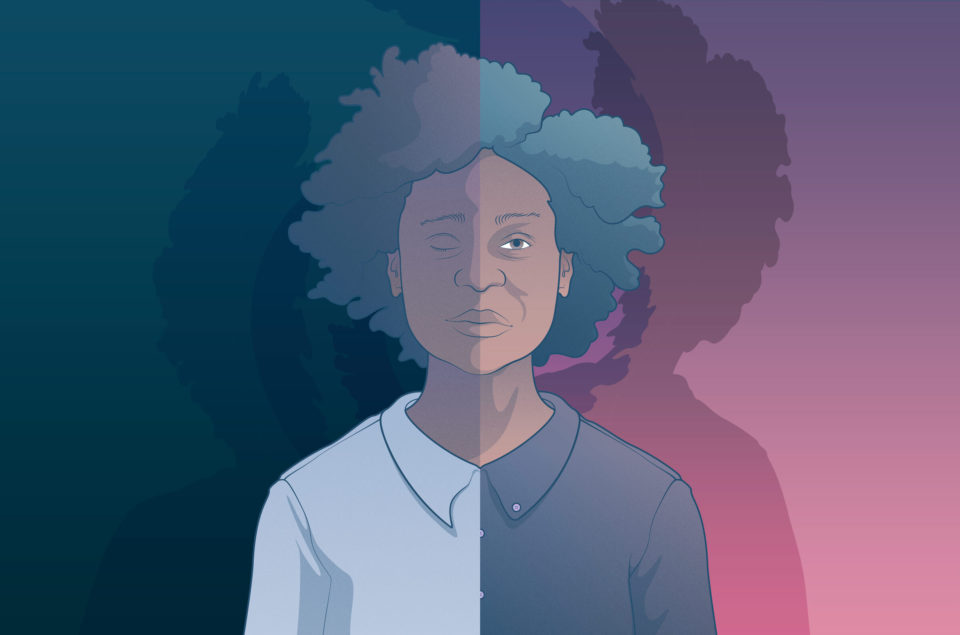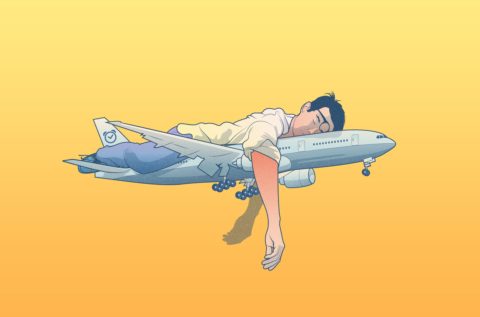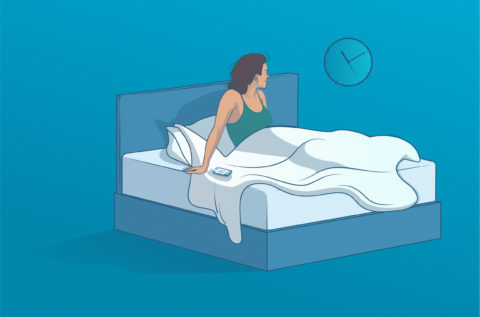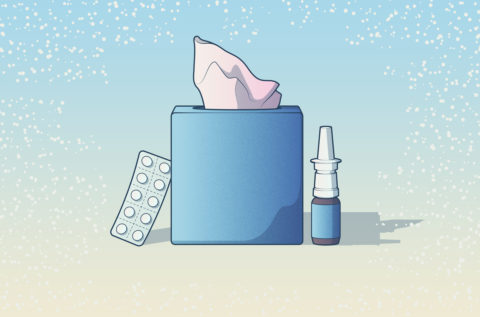How astronauts sleep in the most extreme conditions
Space travel became an extreme adventure sport in 2021 for some of the world’s richest as Jeff Bezos’ New Shepard rocket took a suborbital flight that lasted 11 minutes – three of those minutes actually experiencing weightlessness – before returning to Earth.
For the length of this particular trip, it’s doubtful whether Bezos’s team needed training for sleeping in space, however for astronauts that have to spend long periods of time in space, we dig deeper into how they actually sleep and the impact sleeping in space has on astronauts’ circadian rhythm and overall health.
Sleeping conditions in space
As a result of microgravity in space, astronauts are weightless and so can sleep in any orientation. However, they need to be strapped in, within sleeping bags attached to the wall so they don’t float around and risk hurting themselves. As astronauts are used to beds on Earth, they tend to have rigid cushions strapped on to exert pressure along their back.
Sleep quarters in space are constricted and at the International Space Station (ISS) it’s only the size of a phone booth, while in a space shuttle, it’s smaller yet and only a tiny cabin.
Former astronaut Scott Kelly shared in an interview how he would improvise his sleep conditions to replicate the feeling of sleeping horizontally in a bed. He used bungee cords to secure him to the floor and velcroed his head to a cushion, to mimic the feeling of sleeping on a pillow. Pillows are not necessary due to the weightlessness, however it would take getting used to. And although space may not carry sound, the aircrafts will be noisy and also bright, as the sun viewed from space is exceptionally intense and so earplugs and eye masks are particularly important when sleeping in space. An astronaut’s typical sleep space would include:
- a sleeping bag
- a pillow
- a lamp
- an air vent
- a personal laptop
- a place for personal belongings
Circadian Rhythm in space
An astronaut can experience approximately 16 sunrise and sunsets during the course of 24 hours due to the spacecraft orbiting the Earth. And as light is key to controlling the circadian rhythm, this can quickly get disrupted and out of sync in astronauts. Sleep deprivation is common for astronauts, as both before and during flights, changes in the circadian rhythm occur.
The length of the day in space is abnormal due to the number of sunrises and sunsets, which contributes to an unusual sleep-wake cycle. Spaceflights and work at the space stations also include shift work, which can lead to further circadian disruption. Even though astronauts are allotted 8 hours of sleep, the disruption in the circadian rhythm and the extreme sleep conditions can still make it difficult to find sleep and stay asleep. At the same time, many astronauts have reported that 6 hours is sufficient for them to feel fully rested. Specialists speculate that this may be because the body tires less quickly in weightlessness.
Risks associated with sleeping in space
Sleep in space was first documented in 1976 when it was reported for the first time the sleep condition of three American Skylab astronauts by polysomnographic analysis. Sleep deprivation and low sleep quality are common problems for astronauts and the main causes seem to be confined cabins, the disruption of the circadian rhythm and physiological and physical discomfort. Motion sickness is also a common sleep disruptor for astronauts.
Risks associated with this are:
- The decline in cognitive and operational functions.
- Prolonged sleep deprivation can affect your mood and mental health, which can be hazardous when carrying out work-related tasks and staying in an extreme environment, such as space for longer periods of time.
- It’s also of utmost importance that sleep quarters are well ventilated. Otherwise, astronauts can wake up oxygen-deprived and gasping for air, due to their own exhaled carbon dioxide forming bubbles over their heads. Brain cells are extremely sensitive to a lack of oxygen and brain cells can start dying less than 5 minutes after their oxygen supply disappears; resulting in brain hypoxia and in severe cases brain damage or even death.
As the tasks at ISS are highly complex, this can carry life-threatening risks and so it’s imperative that astronauts follow a strict schedule that includes regular sleep and wake-up times, diet, and exercise. These signals can help maintain their sleep on track.
Sleep habits to practice both in space and at home
Astronauts have strict routines to help facilitate sleep and similarly to how we at home can adopt better sleep hygiene, astronauts lean into the following schedules to help promote better sleep:
- Exercising during their ‘day-time’
- Avoiding longer naps, but instead keeping to the allotted 8 hours
- Regularity – even when performing shift-work, try to stick to regular sleep schedules
- Avoiding stimulants such as caffeine several hours before bedtime.
- Priming your sleep space –even when it’s a cabin the size of a phone booth – to ensure it’s conducive to good sleep, including gadgets such as eye masks and earplugs to help.
- Sticking to a healthy diet – Space grown salad anyone?
Grateful for your bed on Earth
As you head to bed tonight, it may be worth reminding yourself of what astronaut, Scott Kelly said when he finally was back on Earth:
“I find that I sleep so much better than I used to now that I no longer work at NASA or in the military.”
Crisp linen, foam memory mattresses and weighted duvets in all its glory, however appreciating you can feel the pillow and mattress under your back and neck as well as the soft weight of a blanket on top of you, may do the trick in putting you to sleep tonight!
